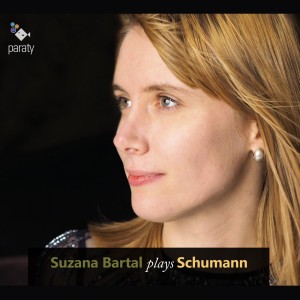
“I is an other” Kreisleriana op. 16 : Most of the works that Robert Schumann (1810-1856) composed for the piano are “paraphrases of poems that he never wrote.” This applies particularly to “Kreisleriana” opus 16, named after Kreisler, the mad musician invented by the writer E.T.A. Hoffmann (1776-1822).
The one, Robert Schumann, is a composer who writes. The other, E.T.A. Hoffmann, is a writer who composes. For their artistry to converge it was necessary that a bridge be built between them; it was Schumann who constructed it with Kreisleriana, directly inspired by the Hoffmann collection “Fantasy Pieces in Callot’s Manner.” Duality, often conflictual, is at the heart of this work: that of Kreisler with society, Robert with Clara’s father, Schumann with Hoffmann, Florestan with Eusébius, and Robert with Schumann, anticipating the Rimbaudian “I is an other.”
“The forest is a state of mind” Forest Scenes op.82 : As with the writer E.T.A. Hoffmann, the painter Caspar David Friedrich was an emblematic figure of German Romanticism. He died eight years before Schumann composed “Forest Scenes” in 1849. But listening to “Forest Scenes”, it is impossible not to think of Friedrich’s painting “The Hunter in the Forest” which shows a bird in the foreground, and a hunter in the distance. With all its symbolism of mystery and the unconscious, the forest “is a state of mind,” as the philosopher Gaston Bachelard wrote. The forest is a central theme of Romanticism, and it is not surprising that Schumann seized upon it. Nor is it surprising, in such a context, that Schumann refused to reduce a forest walk to a banal, bucolic stroll in a preserved space.
“That obscure light that fell from the stars” Ghost Variations, or Theme and Variations in E-flat major for piano WoO 24 : Marked with a tragic seal, the set of “Ghost Variations” is the last piano work written by Robert Schumann. In the night of February 17-18, 1854, he heard a theme in E-flat major dictated to him by angelic voices, the ghosts of Schubert and Mendelssohn. He notated the theme several days later, probably around February 22 or 23. On February 27, he continued working on the variations when suddenly he left his house and threw himself into the Rhine river. Saved by sailors, he was brought back home. On March 4, he was interned at Doctor Richarz’s asylum in Endenich, near Bonn, at his own request. He would never leave the asylum, and died there two years later.
Suzana Bartal is one of the upcoming piano talents of the young generation. Born in 1986 in TimiÅŸoara (Romania) into a Hungarian family, she started her musical education in her hometown. She gave her first solo recital at the age of 12 and had her first concerto apparition at the age of 13. In 2005 she moved to France where she studied with Denis Pascal, Pierre Pontier and Florent Boffard in Paris and in Lyon at the CNSMD. Between 2011 and 2014, Suzana has perfected her skills with Peter Frankl at the Yale School of Music, where she also worked as a Teaching Assistant. She has received the Harriet Gibbs Memorial Prize for excellency in studies from Yale.
In 2013, Suzana Bartal has become the winner of the New York Concert Artists Concerto Competition and has made her NYC debut with orchestra.. She was also the winner of the 2012 Woolsey Concerto Competition allowing her to perform under the baton of Peter Oundjian. A recipient of the prestigious scholarship from the Yamaha Music Foundation of Europe, Suzana has also been supported by the Fondation Nadia et Lili Boulanger, the ADAMI and the Williamson Foundation.

